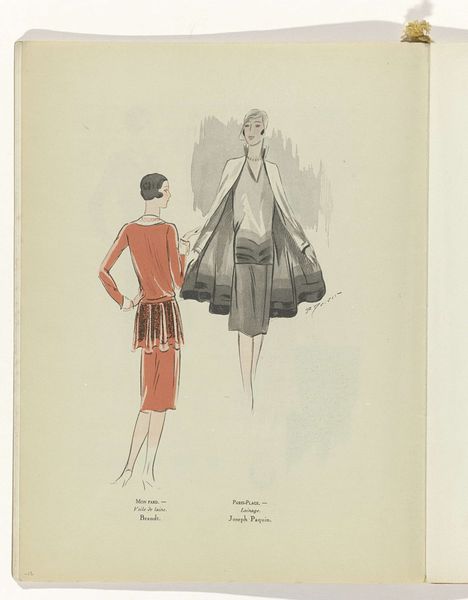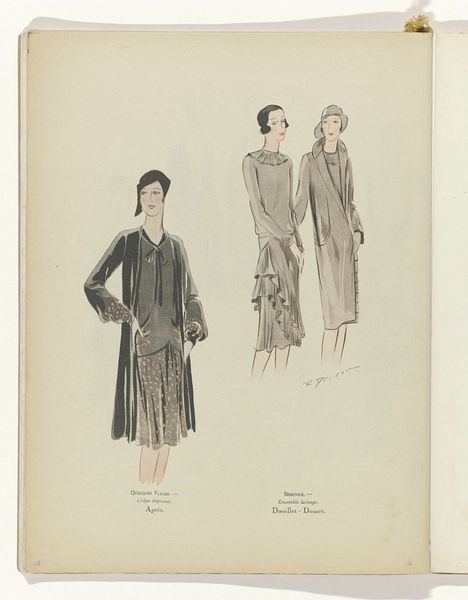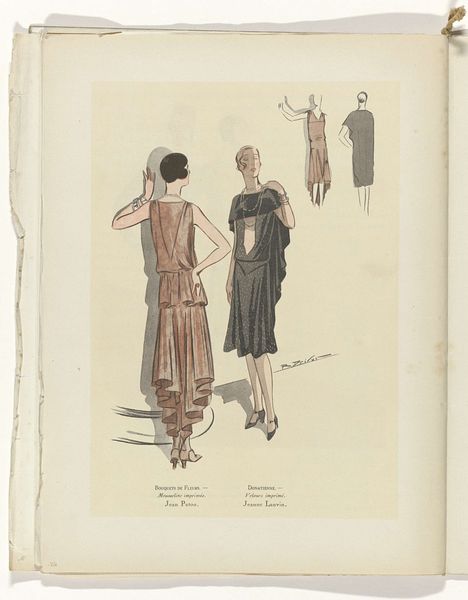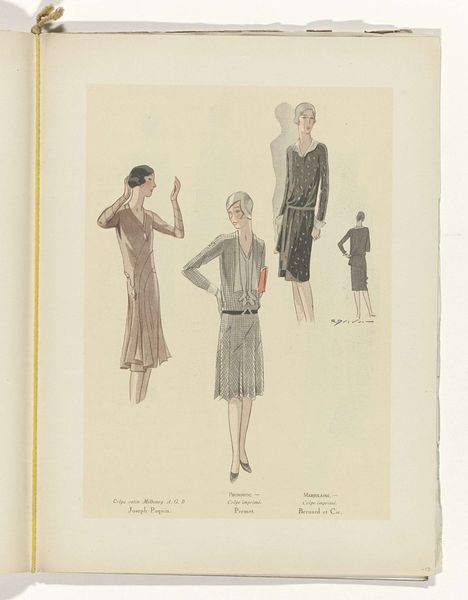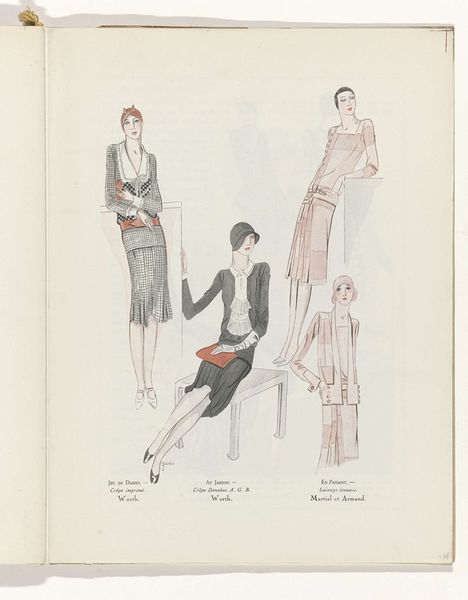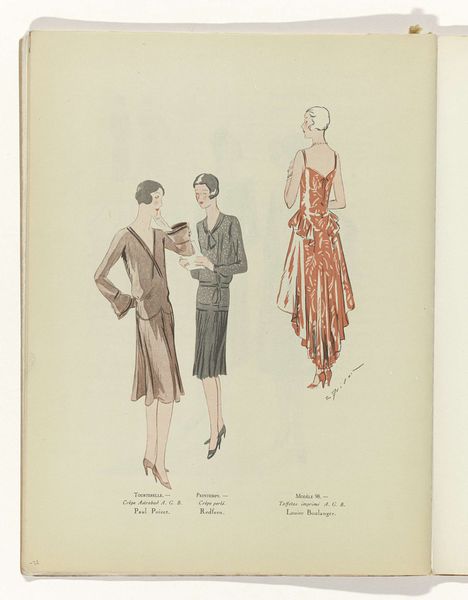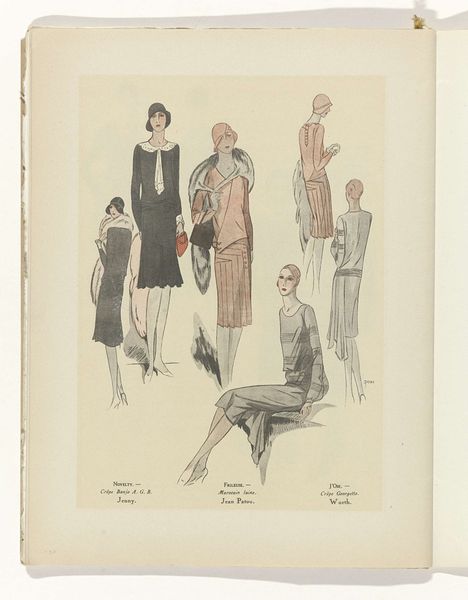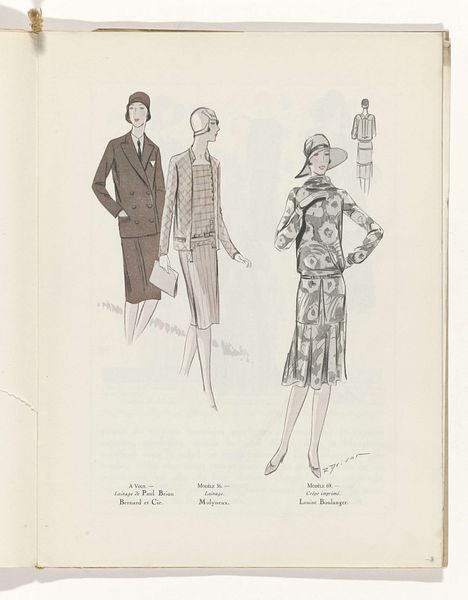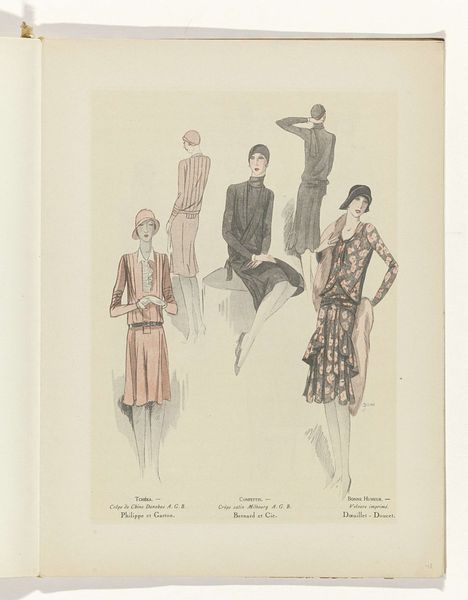
Art - Goût - Beauté, Feuillets de l' élégance féminine, Mai 1929, No. 105, 9e Année, p. 11 1929
0:00
0:00
drawing, watercolor
#
portrait
#
art-deco
#
drawing
#
aged paper
#
toned paper
#
light pencil work
#
personal sketchbook
#
watercolor
#
sketchbook drawing
#
watercolour bleed
#
watercolour illustration
#
fashion sketch
#
sketchbook art
#
dress
#
watercolor
Dimensions: height 315 mm, width 240 mm
Copyright: Rijks Museum: Open Domain
Editor: This is "Art - Goût - Beauté, Feuillets de l'élégance féminine, Mai 1929, No. 105, 9e Année, p. 11," by R. Drivon, made with watercolor and drawing. It’s got that really elegant 1920s vibe, but what strikes me is how it shows the materiality of fashion. What do you make of this image? Curator: Precisely. Look at the medium: watercolor and drawing, typical of fashion plates meant for reproduction, hinting at the increasing industrialization of fashion and its dissemination through printed media. These weren't meant as "high art," but as functional guides. Editor: So, the point isn’t necessarily about individual artistic expression, but about the material reality of clothing production? Curator: Exactly! We should think about the labor involved in creating these garments, the fabrics used—crepe danahée and crepe satin, it specifies!—and their accessibility to consumers. What does that imply to you about consumption and access? Editor: Well, specifying the materials brings to mind a new industry, using textiles in a new way. Not only is there more, but this era introduced synthetic fabrics allowing new accessibility and consumption? Curator: Think also of the social context. This is Art Deco, an era obsessed with modernity and streamlined design. But also look at the process. The very visible pencil strokes, the almost hasty watercoloring - this wasn't meant to be precious, but functional, reflecting the increasing speed of fashion cycles. The focus shifts away from laborious and skilled handcrafted work to quicker processes. Editor: It's interesting how considering materials and process shifts the focus from just aesthetics to broader social and economic implications! Thank you for the added context! Curator: Exactly. Analyzing such images shifts art history toward how things were made and how people consumed them!
Comments
No comments
Be the first to comment and join the conversation on the ultimate creative platform.
